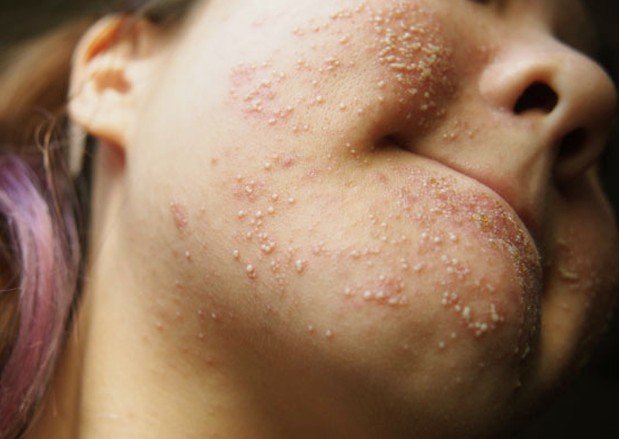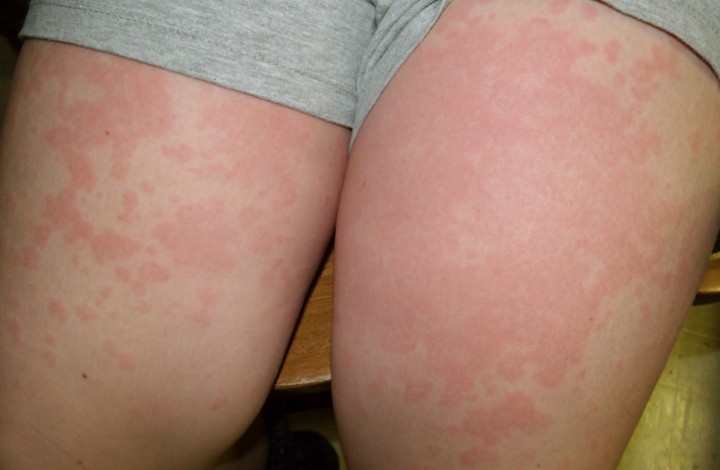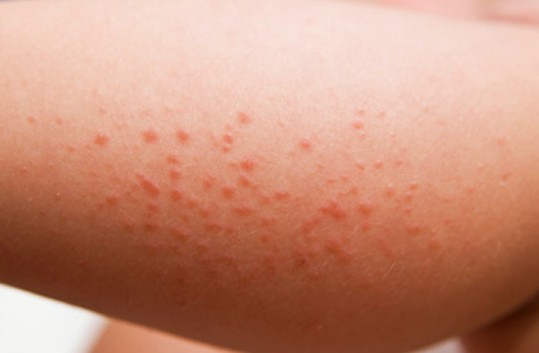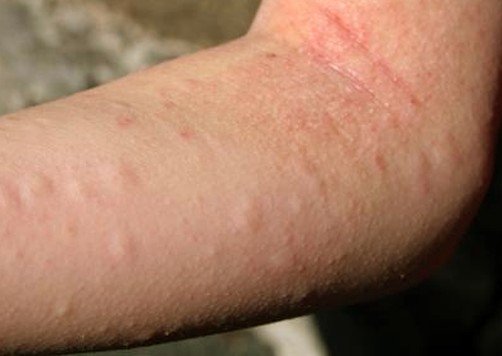Allergic Reaction Rash
Last reviewed by Dr. Raj MD on January 12th, 2022.
What is allergic reaction rash?
This is the type of rash a person could get if they are allergic to something they ate, a medication they are taking, certain cosmetics, shampoo, deodorant, soap, clothing material, pollen, molds, dirt, etc. Having an allergy to something is very common and it is nothing more than a misguided reaction of your body’s immune system to certain things. Most of the times having an allergic reaction is not serious but there are some that are extremely serious and can even be deadly.
According to the American Academy of Allergy Asthma & Immunology there are more than three thousand seven hundred out of eighty-five thousand chemicals found in the environment that can cause allergic reaction rash.
There are three main types of allergic reaction rashes, which include:
- Eczema – this is also known as atopic dermatitis and affects mainly young children but adults can also get it.
- Hives – this is also known as urticaria.
- Contact dermatitis – this is also called short-term allergic reaction rash.
There are also long-term allergic reaction rash and a rare syndrome called Stevens – Johnson syndrome
Symptoms of Allergic Reaction Rash
The symptoms will vary according to the type of allergic reaction rash you are having.
- Eczema – with this type you may experience excoriation, which is any shallow cut, lesion, or scratch on your skin, inflammation, and intense itching. If you have a case of chronic eczema you may also notice where there is an accentuation of lines a thickening of your skin.
- Hives – the symptoms of this type is having itchy areas that are a little raised from the level of the skin that is surrounding the itchy area. This rash will usually appear in groups.
- Contact dermatitis – the main symptom is a rash that happens where your skin has touched something that you are allergic to such as a new deodorant, new perfume, etc. In addition to the rash you may also have blisters, itching, and redness.
- Long-term allergic reaction rash – with this type the symptoms are usually more severe. It is possible that you might develop a thickened, dark leathery appearance along with painful deep cracks in your skin. From the original site of contact the rash tends to spread outward. Because of the deep cracks you could also develop a serious bacterial infection
- Stevens-Johnson syndrome – you will usually have a burning skin rash that will blister and eventually the top layer of your skin will start to peel off. This rash will usually begin on your face, upper chest, and mouth, and may start to spread down and outward.
Causes
- Eczema – you will find this type of allergic reaction rash in areas that are more prone to scratching, friction with clothes, and rubbing. Some of these places can include your cheeks, scalp, elbows, knees, etc.
- Hives – this allergic reaction rash can be caused by medications, foods, insect stings or bites, etc. One of the most common medications to cause hives is sulfa medications like penicillin.
- Contact dermatitis – this type of allergic reaction rash happens when your skin comes into contact with a substance that acts as an allergen or irritant like poison oak, poison ivy, soaps, detergents, etc. There are at least a hundred different chemicals that are used in perfumes that could cause this type of allergic reaction rash.
- Long-term allergic reaction rash – this is caused by repeated contact with something that you are allergic too. It is common to find this is the workplace such as manufacturing companies.
- Stevens-Johnson syndrome – this allergic reaction rash can be caused by a severe reaction to an infection or medication. On average it affects one in six out of one million people each year. Although it can be caused by any medication the main ones are anti-inflammatory medications, sulfa medications, penicillin, anti-seizure drugs, and cephalosporin antibiotics. Of all the cases reported sixty percent are related to medications.
Treatment
For many allergic reaction rashes you can treat the symptoms at home but if these do not seem to be working or the allergic reaction rash is spreading or getting worse you should see your physician or dermatologist. If you notice that you have an allergic reaction rash after using a new product then it is best to stop using that new product.
Here are some of the home remedy treatments you can use.
- Chamomile flowers – add three to four teaspoons of dried or fresh chamomile flowers to a cup of boiling water. Once it has cooled use it to wash the area of your skin where the allergic reaction rash is located.
- Olive oil – warm a tablespoon of olive oil and then apply it to the rash. It will penetrate your skin and help to cure the rash. It is one of the best treatments you can use at home for allergic reaction rash.
- Oatmeal and cornstarch bath – add a cup of oatmeal and cornstarch and add it to your bath water. Soak at least fifteen minutes, empty out the water and then take a bath with plain water. To help alleviate the symptoms of allergic reaction rash you should do this three to four times a week.
- Aloe Vera – this amazing herb has antibiotic, anti-viral, anti-inflammatory soothing properties which makes it an ideal herb to help heal these skin rashes. Take a leaf from your aloe Vera plant and slit the leaf down the middle to get out the pulp. For seven days, apply this pulp to the rash two to three times a day. It will not only help reduce your symptoms but can also help to speed up the healing of the rash.
- Medication – you can take over-the-counter medication like Benadryl or any anti-histamine medication to help ease the symptoms. You can also get anti-itching creams and lotions.




